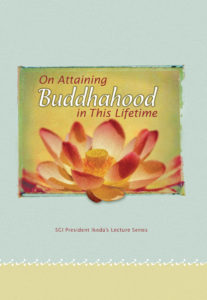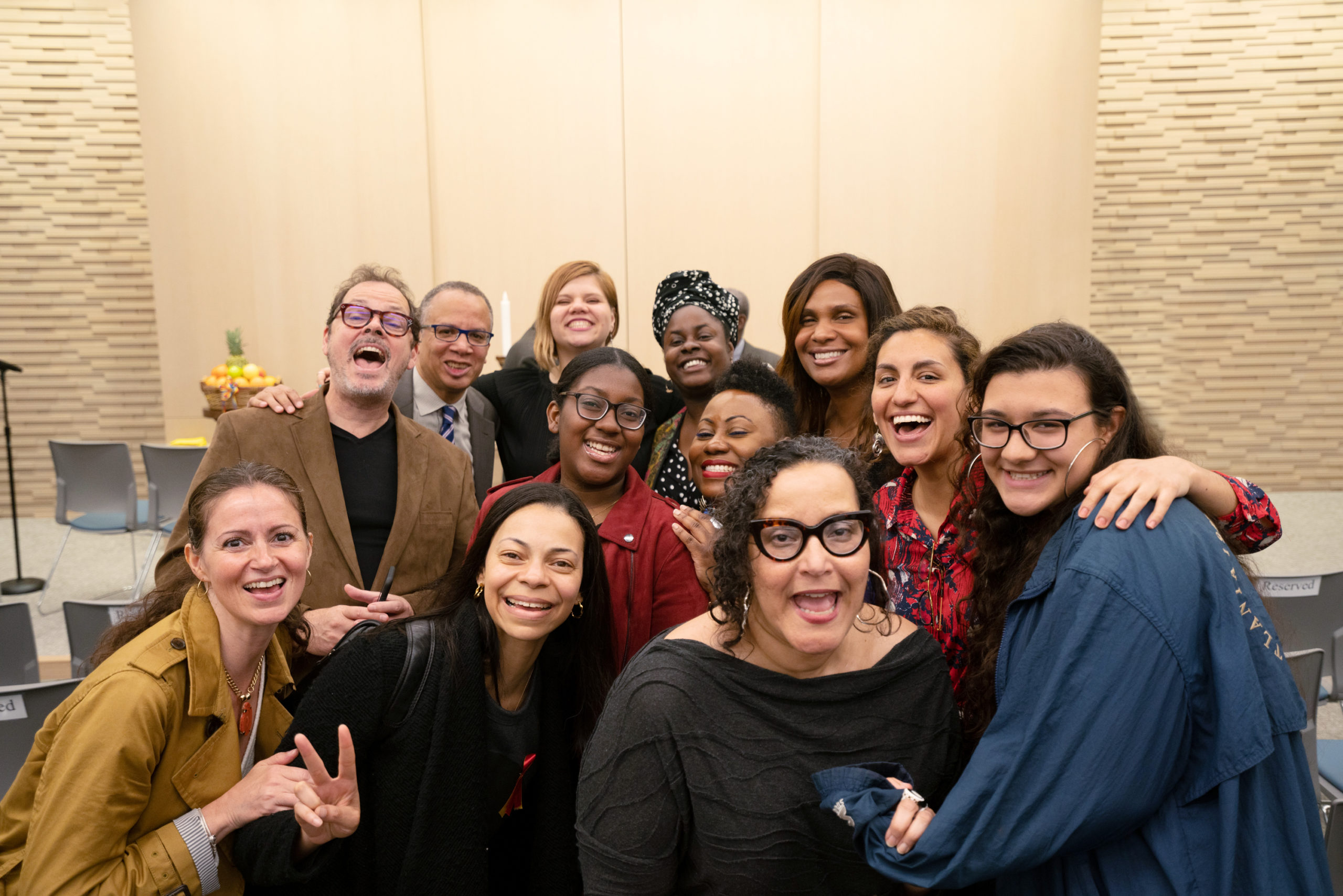Most of us probably began practicing Buddhism to overcome some problem or achieve a dream that seemed out of reach. Becoming enlightened, or “attaining Buddhahood,” may not have been high up on our list.
No matter why we started, however, attaining Buddhahood—a deep, indestructible kind of happiness—remains the primary goal of Nichiren Buddhist practice. And herein lies Nichiren Buddhism’s revolutionary view of Buddhahood: Each person, no matter who, has a Buddha nature.
Nichiren Buddhism also teaches the principle of “attaining Buddhahood in this lifetime.” Other Buddhist schools teach that becoming a Buddha is something far removed from daily life, something that happens only after we die or after an interminable period of intense Buddhist practices over countless lifetimes.
Fortunately, Nichiren Buddhism gives us the means to become a Buddha in this life.
“Not a One Will Fail to Attain Buddhahood”
Nichiren Daishonin talks about a passage from “Expedient Means,” the second chapter of the Lotus Sutra: “If there are those who hear the Law, then not a one will fail to attain Buddhahood” (The Lotus Sutra and Its Opening and Closing Sutras, p. 75).
“This passage,” he says, “means that, if there are a hundred or a thousand people who uphold this sutra, without a single exception all one hundred or one thousand of them will become Buddhas” (“Wu-lung and I-lung,” The Writings of Nichiren Daishonin, vol. 1, p. 1099).
The title “Buddha” means “awakened one” and refers to the state of life—rich with wisdom, compassion, courage and confidence—of a fully awakened individual.
Nichiren taught that anyone can fully access this awakened state. In fact, we can tap it right this instant by chanting Nam-myoho-renge-kyo to the Gohonzon.
So if all people naturally possess the world of Buddhahood what, then, does it mean to “attain Buddhahood”?
“‘Attain’ means to open or reveal” (The Record of the Orally Transmitted Teachings, p. 126), Nichiren says.
We can open the Buddha nature that is within us right here and now, just as we are. That is, even if we’re in a state of suffering, by chanting Nam-myoho-renge-kyo, we can bring forth hope and confidence.
Thus, enlightenment isn’t something we gain or receive in the distant future, nor is a Buddha a special, superhuman being. Attaining Buddhahood means awakening the wondrous inner qualities we naturally possess. It also means to live in the most fulfilling way, a way unique and true to ourselves.
Human Revolution: A Modern Expression of Buddhahood
Revealing our Buddhahood through chanting is also a process of purifying our lives, fully displaying and putting to best use our inherent power. Through this process, we bring forth our strongest life force, leaving us unhindered by any hardship or opposition. In fact, by chanting about and taking action to resolve our challenges, we further purify and strengthen our lives, gaining greater physical and mental well-being.
Second Soka Gakkai President Josei Toda described attaining Buddhahood as “human revolution,” an ongoing process of profound personal transformation and growth.
Ikeda Sensei has suggested seven indicators by which we can measure our human revolution: health, youthfulness, good fortune, wisdom, passion, conviction and victory. He highlighted “developing compassion as an essential foundation that encompasses all seven elements” (The Wisdom for Creating Happiness and Peace, part 2, p. 13).
“Life-Span,” the Lotus Sutra’s 16th chapter, ends with Shakyamuni Buddha’s statement “At all times I think to myself: How can I cause living beings to gain entry into the unsurpassed way and quickly acquire the body of a Buddha?” (LSOC, 273). Here, “body” can mean “identity” or “self.”
So he wishes to enable each person to become a Buddha. This expresses not only the Buddha’s compassion but his strong sense of responsibility to help everyone become happy.
The Soka Gakkai today is the gathering of people dedicated to realizing this wish and vow of Shakyamuni and Nichiren. On a broader scale, we call this kosen-rufu.
Sensei writes:
When we take on problems and challenges, chant Nam-myoho-renge-kyo, and make efforts based on a great sense of responsibility for kosen-rufu, the life state of Buddhahood, of Nam-myoho-renge-kyo, that the Daishonin embodied cannot fail to manifest itself in our lives. (The Wisdom for Creating Happiness and Peace, part 3, p. 42)
Maybe attaining Buddhahood wasn’t top on our list when we started chanting. But as we advance in our Buddhist practice, we can develop our abilities to truly care about others, about kosen-rufu and peace, and savor genuine, enduring happiness.
—Prepared by the SGI-USA Study Department
 Check it out! On Attaining Buddhahood in This Lifetime features a series of Ikeda Sensei’s lectures on Nichiren Daishonin’s letter of the same name.
Check it out! On Attaining Buddhahood in This Lifetime features a series of Ikeda Sensei’s lectures on Nichiren Daishonin’s letter of the same name.
Visit our online bookstore to purchase the title as a hard copy ($4.95) and e-book ($3.99). Happy reading!
You are reading {{ meterCount }} of {{ meterMax }} free premium articles

